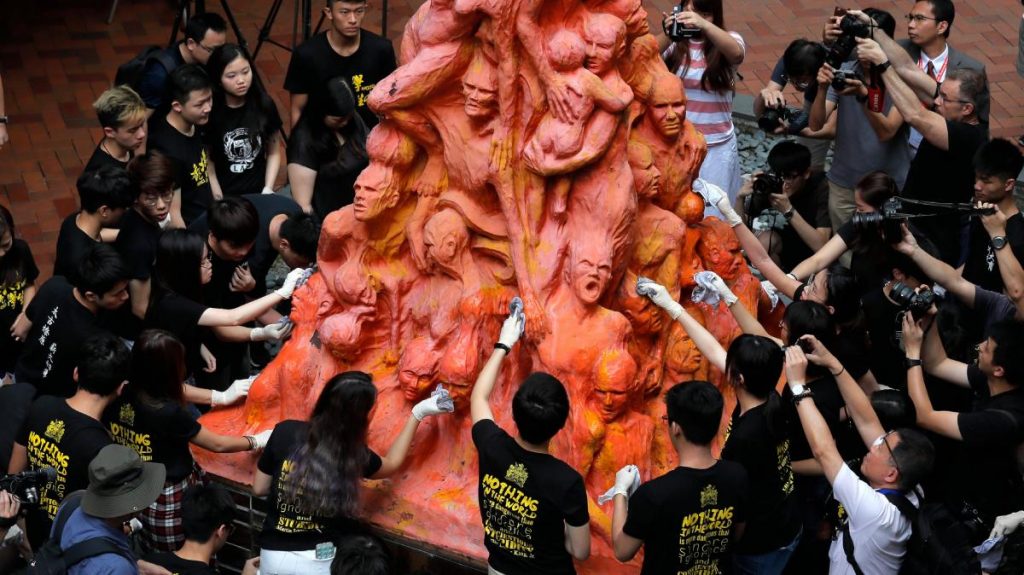Hong Kong: A monument at a Hong Kong university that commemorates the 1989 Tiananmen Square massacre was removed by workers early Thursday over the objections of its creator from Denmark.
The 8-meter (26-foot) tall Pillar of Shame, which depicts 50 torn and twisted bodies piled on top of each other, was made by Danish sculptor Jens Galschiot to symbolize the lives lost during the bloody military crackdown on pro-democracy protesters in Beijing’s Tiananmen Square June 4, 1989.
But the statue became an issue of dispute in October, with the university demanding that it be removed, even as the decision drew backlash from activists and rights groups. Galschiøt offered to take it back to Denmark provided he was given legal immunity that he won’t be persecuted under Hong Kong’s national security law, but has not succeeded so far.
Workers barricaded the monument at the University of Hong Kong late Wednesday night. Drilling sounds and loud clanging could be heard coming from the boarded-up site, which was patrolled by guards.
In October, the university informed the now-defunct candlelight vigil organizer, the Hong Kong Alliance in Support of Patriotic Democratic Movements of China, that it had to remove the statue following “the latest risk assessment and legal advice.” The organization had said that it was dissolving, citing a climate of oppression, and that it did not own the sculpture. The university was told to speak to its creator instead.
When reached by The Associated Press, sculptor Galschiot said he was only aware of what was happening to the sculpture Wednesday from social media and other reports.
“We don’t know exactly what happened, but I fear they destroy it,” he said. “This is my sculpture, and it is my property.”
He had previously written to the university to assert his ownership of the monument, although his requests had gone largely ignored. He has also warned the university that he could seek damages if the statue was damaged during its removal.
Hong Kong authorities have cracked down on political dissent following the implementation of the national security law that appeared to target much of the pro-democracy movement.
The law, which outlaws secession, subversion, terrorism and foreign collusion to intervene in the city’s affairs, was imposed by Beijing following months of anti-government protests in 2019.
Over 100 pro-democracy activists have been arrested under the national security law, which has been criticized as rolling back freedoms promised to Hong Kong when it was handed over to China by Britain in 1997.
The Pillar of Shame monument has been erected for over two decades, and initially stood at Hong Kong’s Victoria Park before eventually being moved to the University of Hong Kong on a long-term basis.
Each year on June 4, members of the now-defunct student union would wash the statue to commemorate the Tiananmen massacre. The city, together with Macao, were previously the only places on Chinese soil where commemoration of the Tiananmen crackdown was allowed.
Over the past two years, the annual candlelight vigil in Hong Kong had been banned by authorities, who cited public risks from the coronavirus pandemic.
Some 24 activists were charged for their roles in the Tiananmen vigil last year, during which activists turned up and thousands followed, breaking past barricades in the park to sing songs and light candles despite the police ban on the event.
